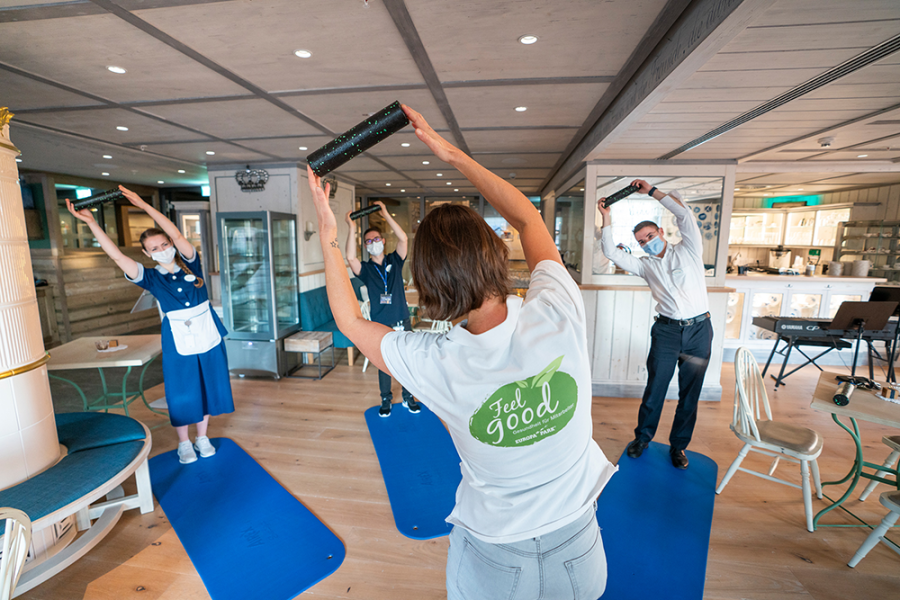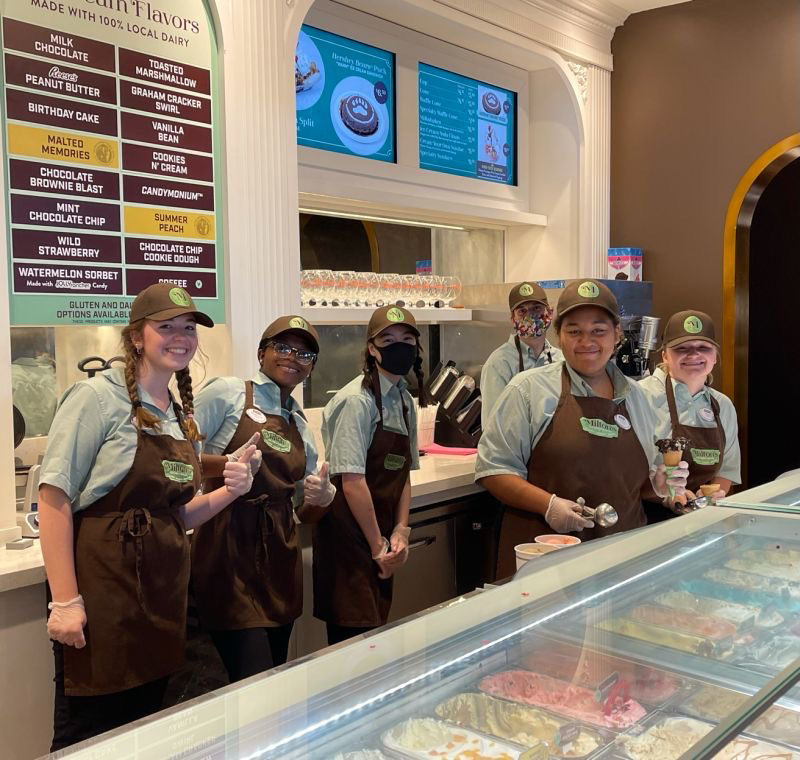Working Well
The COVID-19 pandemic brought staff well-being into sharper focus, accelerating a change that was already happening. The Future Workplace 2021 HR Sentiment Survey showed that 68% of human resources (HR) leaders prioritized employee well-being and mental health. The logic is clear: When employees thrive, employers benefit through increased performance, reduced absenteeism, and improved staff retention. Contented employees are also likely to put in extra effort, resulting in higher customer satisfaction.

Understand Individual Needs
“Healthy employees are happier and more productive,” confirms Miriam Mack, head of corporate health management at Europa-Park in Germany. Europa-Park’s starting point is that different employees need different services.
“It is important to respond to their needs individually,” says Mack. “We have a wide range of jobs at Europa-Park. We tailor our programs to specific jobs and the strains that come with them.” For example, staff members who spend almost all day on their feet might appreciate footwear advice; movement classes can help deskbound employees.
“It is important to make health easily accessible. The offers have to come to the employees—then it works very well,” Mack says. Europa-Park reaches many employees at its annual “Health Day,” where it showcases health and well-being offerings together with partners. These include health screenings, free exercise classes, a gym membership stipend, running groups, guided meditation, and other health-related activities, like the Veganuary charity run challenge. “Our employees can try a lot of things in a relaxed environment and take advantage of preventive care offers,” Mack says.
Day to day, Europa-Park’s staff restaurants serve nutritious food. Teams can participate in office yoga or balancing exercises at work. “Even shoe measurements or bone density measurements take place at the park,” Mack says. Activities are adapted to different occupational groups and run throughout the day to benefit everyone. During the pandemic, Europa-Park introduced a weekly “Feel Good Talk,” featuring expert hosts, which employees can view online.
Health challenges are also popular. “Our ‘Sugar-Free Challenge’ inspired almost 200 participants to give up sugar for 40 days,” Mack adds. The team also organizes “action months” on topics including mental health and gut health.
“We are always educating ourselves,” Mack says. The park’s health and well-being program reflects an “honest appreciation of every single employee and a daily commitment to support the people who help make Europa-Park what it is.”

Thank People
A “thank you” is powerful, according to Ulrike Dahl, HR director at Karls, the German family attraction brand born out of strawberry farming. “So many people never get a thank you for doing their job,” Dahl explains. “We do it once a month.” Karls employees receive an envelope containing a thank you token every month—it might be a pen, strawberries, or even sunflower seeds. Employees can also leave daily feedback about their job. “We immediately react to this,” says Dahl, adding that it makes people feel heard and valued.
“Every manager has learned the importance of having a daily team huddle, connecting with people, and telling them we are here for them,” says Marie-France Caboste, learning and development manager at Alshaya Group. Sharing positive guest feedback and thoughtful perks can lift morale too.
“At IAAPA, we’ve introduced a company account for the Calm app,” says Jakob Wahl, executive vice president and chief operating officer.
Show Appreciation
“Our team members’ safety and well-being have always been paramount for Hershey Entertainment & Resorts,” says Kathleen McGraw, managing director of corporate communications and community relations. To keep teams happy, healthy, and resilient, she has five recommendations: listen, communicate, appreciate, inform, and follow-up.
“In 2022, we are increasing the number of departmental meetings and listening sessions to stay better connected to our team members, especially during this ongoing time of uncertainty,” McGraw says. The move was prompted by what Hershey learned from its biannual employee surveys.
Hersheypark hosts an annual wellness fair for all employees. It also communicates health and wellness opportunities through the company intranet, email, text messages, and voicemail.
Full-time employees can earn cash bonuses by participating in free annual health screenings and wellness activities. In addition to observing COVID-19-safe protocols, Hershey encouraged all team members to get vaccinated with $100 incentives.
“Throughout the year, we hold employee-only events at Hersheypark, first-ride experiences, appreciation events where family members are also invited, and surprise-and-delight activities like pizza parties,” McGraw adds.
According to McGraw, attractions that want to introduce health and well-being programs must first “understand what their teams need to make them successful, happy, and healthy,” and then “provide them with the necessary resources to excel in their roles.”

Embed a Well-Being Culture
For Sanne Forsberg Holm, director and head of people and culture at Lego House in Denmark, an employee’s experience is as important as the customer’s. “It’s like two sides of a coin: intertwined and inseparable,” she says.
Holm finds younger employees respond especially well when they feel their work has purpose and meaning. Sharing easily digestible information through Lego House’s app about their values, aspirations, and updates about everything that is going on “makes a difference to them,” she says. Employees are willing to invest themselves in an experience they believe in. Lego House gathers staff feedback continuously. It encourages employees to have fun together through social events and playing with bricks. Play promotes well-being, which helps with retention.
“It is important to invest time and money in health and well-being,” Europa-Park’s Mack reminds. It takes time to make a difference, but she feels “it pays to stick with it.”
“You have to actively help your employees to stay healthy and come to work without worries,” Mack says. “They will be thankful, and, for your company, it is a sustainable strategy for healthy and satisfied employees.”
